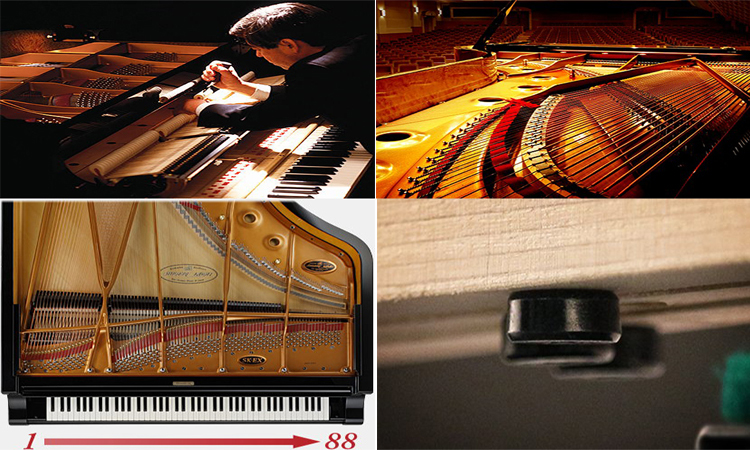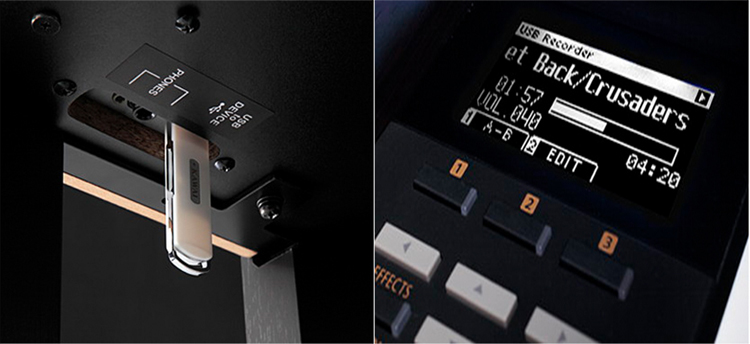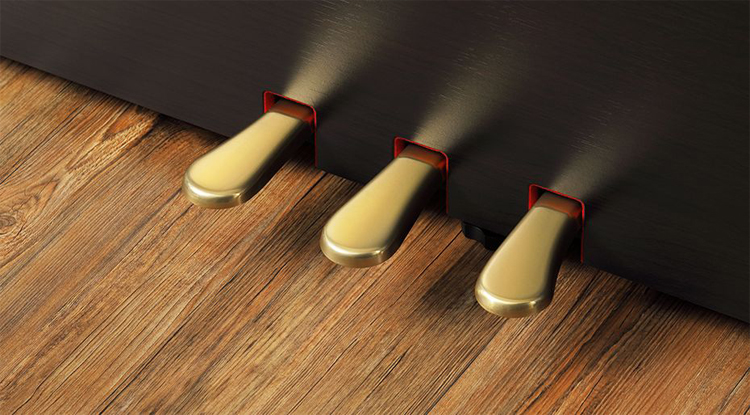Kawai’s CA series has always stood at the front of the digital piano arena. Traditionally a series of 2 models, the Concert Artist series was expanded to 4 models with the release of the CA48 and CA58. Today, we’ll be checking out the update to the CA58 with the new Kawai CA59.
Where the new Kawai CA49 is the doorway into the CA line, the CA59 occupies a sort of middle point. In this review, we’ll be covering the sound engine, the action, and what separates it from the CA49, as well as the upper CA79 and CA99 upper-level CA models.
We’re going to start by diving into the sound engine.
Kawai CA59 Piano Sound

Onkyo Designed Speakers, Amplifiers, and Signal Processing
The Kawai CA59 is super capable in so many different ways when it comes to sound. Like most of Kawai’s other recent digital piano releases. the CA59 represents the fruits of their collaboration with Onkyo over the past few years.
While Onkyo wouldn’t be considered the Rolls Royce of audiophile companies, they are still very well-respected. Onkyo has contributed here with their digital signal processing, improved motherboards, amplifiers, and speakers as well as a discreet headphone amplifier with signal processing specifically designed to accommodate different types of headphones.
While the CA49 also reflects the Onkyo partnership, the first difference from the CA59 appears once we look at the speakers. Where the CA49 boasts 40 watts of power, the CA59 offers a pair of 50-watt amplifiers that are driving a 4-speaker system for a total of 100 watts of output power.
Even at lower volume levels, the CA59 just has a lot more presence than the CA49, especially in the bass register.
Harmonic Imaging XL Sound Engine
The sound engine is also upgraded from the Progressive Harmonic Imaging (PHI) engine on the 49, to Kawai’s top sample-based engine with the Harmonic Imaging XL (HIXL) sound technology with 88-key sampling. The jump from the PHI engine to the HIXL engine means the sound engine is synthesizing more parameters on top of the core sample with its acoustic piano sounds.
There are also more parameters to modify in the Virtual Technician and more maximum polyphony as it jumps from 192 notes on the PHI engine to 256 notes here.
The end result is an even more realistic, super authentic piano tone. The CA49 sounds great, but there’s just another level of authenticity here. The grand piano sounds come from a sampled Shigeru Kawai SK-EX concert grand piano, where each note was sampled individually at multiple dynamic levels. You also get the Kawai EX concert grand and Shigeru Kawai SK5 sample sets here too.
After the three core acoustic piano sounds you get into the more traditional sounds that you’ll generally find on most Kawai digital pianos, regardless of what line it is.
Virtual Technician & Smart Mode
Before diving into the other sounds though we need to mention the Smart Mode, which is really a set of presets that pull up different arrangements of sonic parameters in the Virtual Technician function.
This is where you can start to get dramatically different characters out of the same piano sample set, such as the Shigeru Kawai grand piano, and it’s an excellent way to demonstrate the power of the Harmonic Imaging XL engine can do.
Brilliant. Clean. Dark. There’s a massive variety of tonal profiles available here, all within the exact same core sample, and that’s just within Smart Mode. Things open up considerably more if you bypass the Smart Mode and go directly into the Virtual Technician with 21 parameters available to you.
Other Sounds
Moving onto the other sounds, of which there are 44 in total, and the classic electric pianos are a definite standout. There are quite a few nice editable effects, and with the organ tones, there’s a great rotary speaker effect as well.
The modern OLED control panel makes getting around and Layering the various super easy. Let’s move on to the piano action.
Kawai CA59 Piano Action

Grand Feel Compact Wooden Key Keyboard Action
The Kawai CA59 is using Kawai’s Grand Feel Compact wooden-key keyboard action. When you look at the Grand Feel Compact action, it doesn’t appear that different than some of the other Grand Feel actions in other Kawai pianos, except that it’s just a little bit shorter.
As opposed to the extended key length of the Grand Feel III, the key sticks are the standard length of most digital piano actions. But it does have triple sensor key detection, escapement, and bass region counterweights. The white keys have an ivory touch key surface, and the black keys have a nice matte finish, making for a really nice playing experience.
Something we particularly like about the Kawai white keys is that they round off the edges of the white keys. All manufacturers do it to an extent but really happen to like how Kawai does it specifically.
Triple Sensor Detection
The triple sensor makes this an ideal action to use as an input device for another instrument or when working with a DAW. And of course, the other benefit is more accuracy when you get into quicker repetition speeds and more percussive playing.
A great action overall. Let’s move on to features and connectivity.
Kawai CA59 Connectivity

1/4” Line Outputs
The Kawai CA59 offers some welcome connectivity options and some other welcome features that are worth mentioning. The first thing is that there are 1/4-inch stereo line-outs, which are not present on the CA49. There are also 1/4-inch stereo line-ins, which are not particularly common as well as your 2x headphone jacks.
The CA59 has been pretty popular in the worship community because you can hook it up to your PA system without having to worry about defeating the local speakers or messing around with adapters.
The Kawai CA59 also has both USB Type-A as well as USB type B, so you can get a USB key and record USB audio (WAV) as well as MP3 and MIDI (SMF).
Bluetooth MIDI & Bluetooth Audio
It also has both Bluetooth MIDI as well as Bluetooth audio with APTX support, which means you can broadcast from a device with Bluetooth audio functionality, essentially using the CA59’s high-quality speakers as a stereo.
Kawai CA59 Features
Lesson Books & Repertoire
This instrument also happens to be loaded up with a ton of music book material, such as Alfred, Beyer, Burgmuller, Czerny, and repertoire from Bach and the Chopin Walzer.
Functions
It’s got the obvious standard features as well like a metronome, transpose, four-hands mode, and reverb settings.
Grand Feel Pedal System

The pedals are also notable as Kawai has included their Grand Feel pedal system here, meaning that all three pedals have the spring tension matched to the spring tension that you actually get on a real grand piano.
Finish Options
The Kawai CA59 features a new, modern cabinet design and is available in three finishes – Rosewood, Satin Black, and Satin White.

Closing Thoughts
Thank you for checking out our review of the Kawai CA59 here at Merriam Pianos. It’s an instrument that packs a tremendous punch for the price, considering the cost to upgrade to the CA79.
You’re getting some fantastic speakers here, a wonderful sound engine, great action, and a wide range of connectivity options. If you’d like to actually hear the CA59 in action, be sure to check out our accompanying video review!

